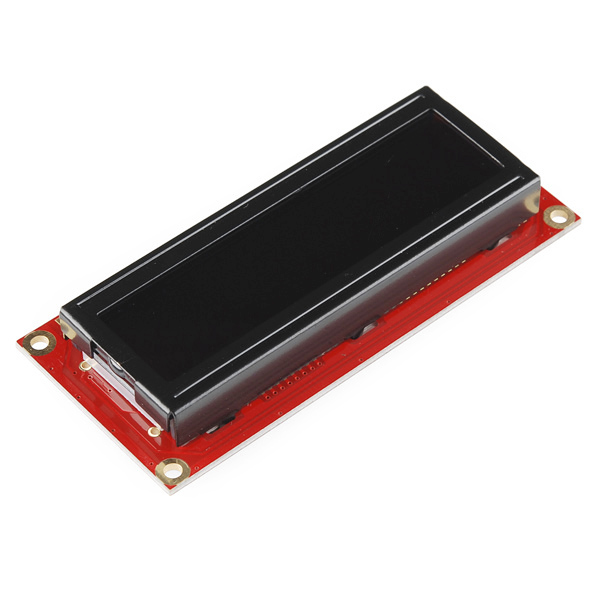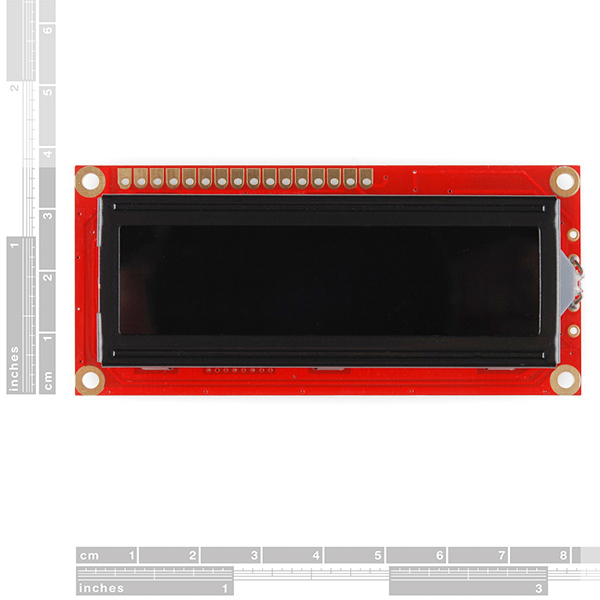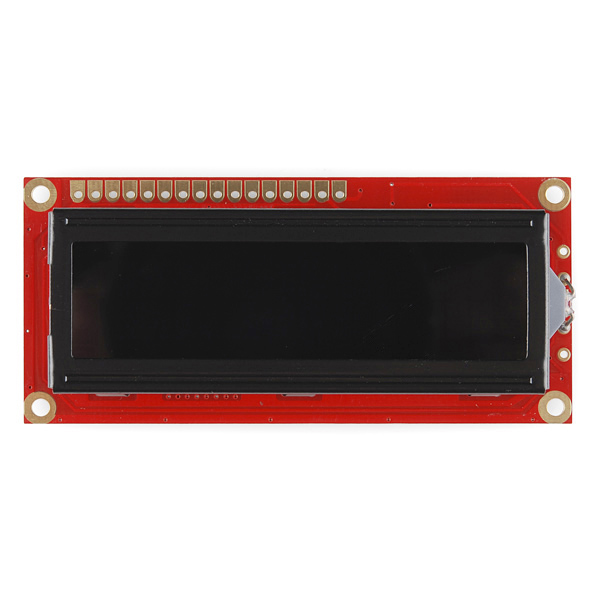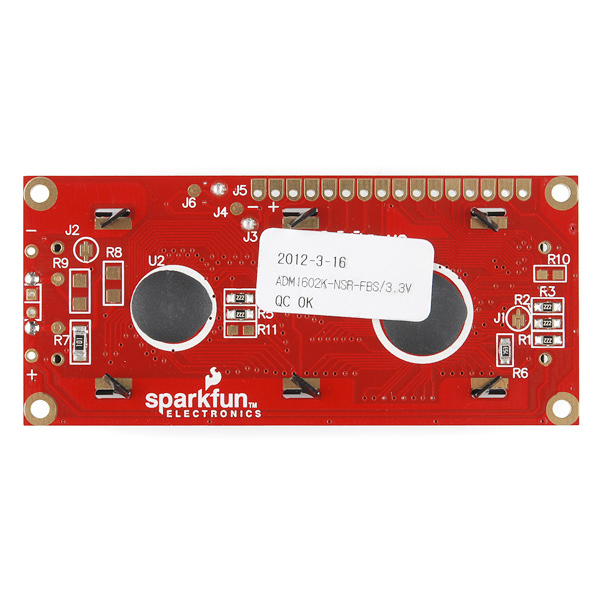Basic 16x2 Character LCD - Red on Black 3.3V
This is a 16 character by 2 line display that runs at 3.3V. Utilizes the common ST7066/HD44780 parallel interface (datasheet). Interface code is widely available for many different controllers and systems. You will need ~11 general I/O pins to interface to this LCD screen. Includes red LED backlight.
- High quality STN 16x2 character LCD
- 3.3V power supply
- Red LED Backlight
- 5x8 dot characters
- ST7066 controller
- 1/16 duty cycle
- 0.34 x 1.4 x 3.2" (8.6 x 36 x 80mm)
Basic 16x2 Character LCD - Red on Black 3.3V Product Help and Resources
PIC-Based Serial Enabled Character LCD Hookup Guide
May 29, 2018
The PIC-based serial enabled character LCD backpack is a simple and cost effective solution for interfacing to character Liquid Crystal Displays (LCDs) based on the HD44780 controller. The backpack simplifies the number of wires needed and allows your project to display all kinds of text and numbers.
Basic Character LCD Hookup Guide
May 28, 2019
Liquid crystal displays (LCDs) are a great way to output a string of words or sensor data to a display for visual feedback. In this tutorial, we'll learn about LCDs, how to print a string of words to a 16x2 basic character LCD and create custom characters.
Core Skill: Soldering
This skill defines how difficult the soldering is on a particular product. It might be a couple simple solder joints, or require special reflow tools.
Skill Level: Noob - Some basic soldering is required, but it is limited to a just a few pins, basic through-hole soldering, and couple (if any) polarized components. A basic soldering iron is all you should need.
See all skill levels
Core Skill: Programming
If a board needs code or communicates somehow, you're going to need to know how to program or interface with it. The programming skill is all about communication and code.
Skill Level: Rookie - You will need a better fundamental understand of what code is, and how it works. You will be using beginner-level software and development tools like Arduino. You will be dealing directly with code, but numerous examples and libraries are available. Sensors or shields will communicate with serial or TTL.
See all skill levels
Core Skill: Electrical Prototyping
If it requires power, you need to know how much, what all the pins do, and how to hook it up. You may need to reference datasheets, schematics, and know the ins and outs of electronics.
Skill Level: Competent - You will be required to reference a datasheet or schematic to know how to use a component. Your knowledge of a datasheet will only require basic features like power requirements, pinouts, or communications type. Also, you may need a power supply that?s greater than 12V or more than 1A worth of current.
See all skill levels
Comments
Looking for answers to technical questions?
We welcome your comments and suggestions below. However, if you are looking for solutions to technical questions please see our Technical Assistance page.
Customer Reviews
No reviews yet.






Hi there, I'm after buying this LCD for my son (9) who wants to use it with his raspberry pi to connect to a breadboard.
Can you let me know what I would also need to connect this to the breadboard? Some kind of pins I'm guessing? But I'm not entirely sure what ones - any help gratefully received! Cheers
Is it the same one as this one :http://www.oledlcdmodule.com/html_products/16x2-Character-lcd-module-35.html
Question - how hard is it to use these with a 4 pin data interface rather than 8?
I am having trouble getting any visible output out of this LCD. Tried a 9k pot to get a voltage divider to supply V0, and at could get no output at all. Using an arduino pro mini 3.3v in 4 bit parallel mode. No clear indication here whether this is the correct method for powering the LCD contrast pin, or whether negative voltage is required.
This is because of the following issues: 1. loose connection of the 10k trim pot resistor. 2. 0k. Adjust the trim pot resistor to higher value.
I was able to figure it out. It works just as it should: 10k pot for contrast just like any other LCD